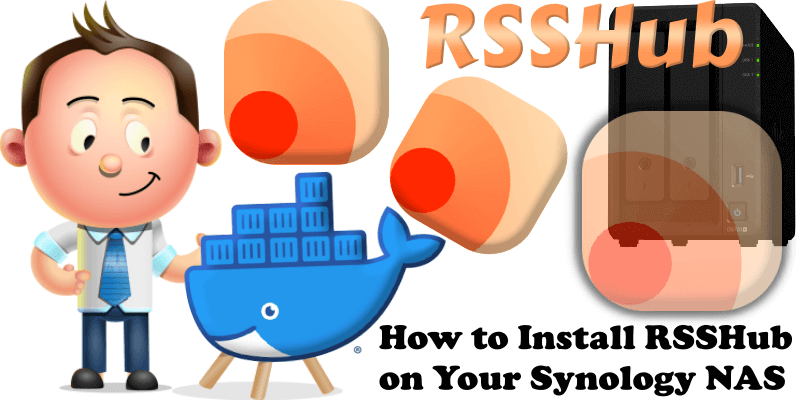
RSSHub is an open source, easy to use, and extensible RSS feed generator. It’s capable of generating RSS feeds from pretty much everything. RSSHub can be used with browser extension RSSHub Radar and mobile auxiliary app RSSBud for iOS and RSSAid for Android. In this step by step guide I will show you how to install RSSHub on your Synology NAS using Docker & Portainer.
STEP 1
Please Support My work by Making a Donation.
STEP 2
Install Portainer using my step by step guide. If you already have Portainer installed on your Synology NAS, skip this STEP. Attention: Make sure you have installed the latest Portainer version.
STEP 3
Go to File Station and open the docker folder. Inside the docker folder, create one new folder and name it rsshub. Follow the instructions in the image below.
Note: Be careful to enter only lowercase, not uppercase letters.
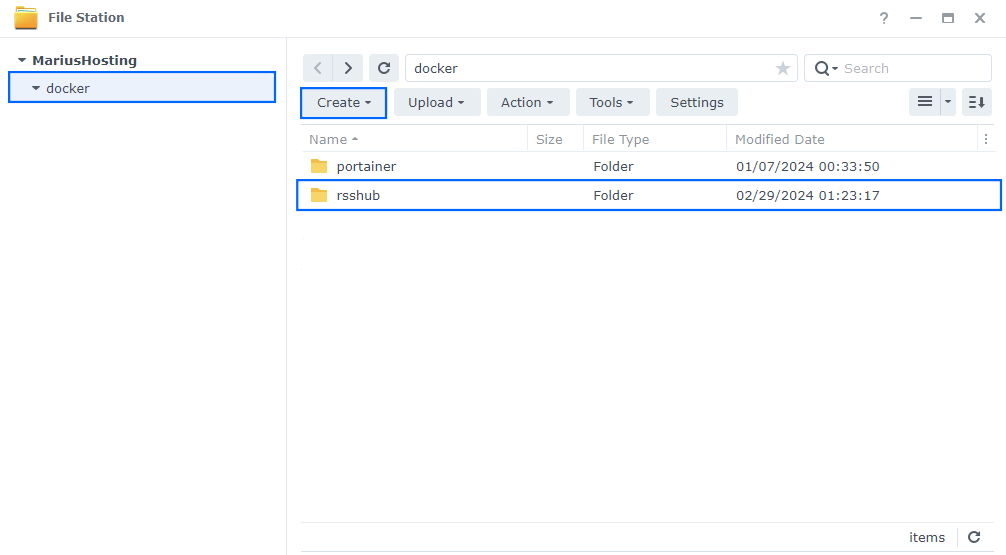
STEP 4
Log into Portainer using your username and password. On the left sidebar in Portainer, click on Stacks then + Add stack. Follow the instructions in the image below.

STEP 5
In the Name field type in rsshub. Follow the instructions in the image below.
version: '3.9'
services:
rsshub:
image: diygod/rsshub
container_name: RSSHub
restart: on-failure:5
ports:
- 1200:1200
environment:
NODE_ENV: production
CACHE_TYPE: redis
REDIS_URL: 'redis://redis:6379/'
PUPPETEER_WS_ENDPOINT: 'ws://browserless:3000'
PROXY_URI: 'socks5h://warp-socks:9091'
depends_on:
- redis
- browserless
browserless:
image: browserless/chrome
container_name: RSSHub-BROWSERLESS
restart: on-failure:5
redis:
image: redis:alpine
restart: on-failure:5
container_name: RSSHub-REDIS
volumes:
- /volume1/docker/rsshub:/data:rw
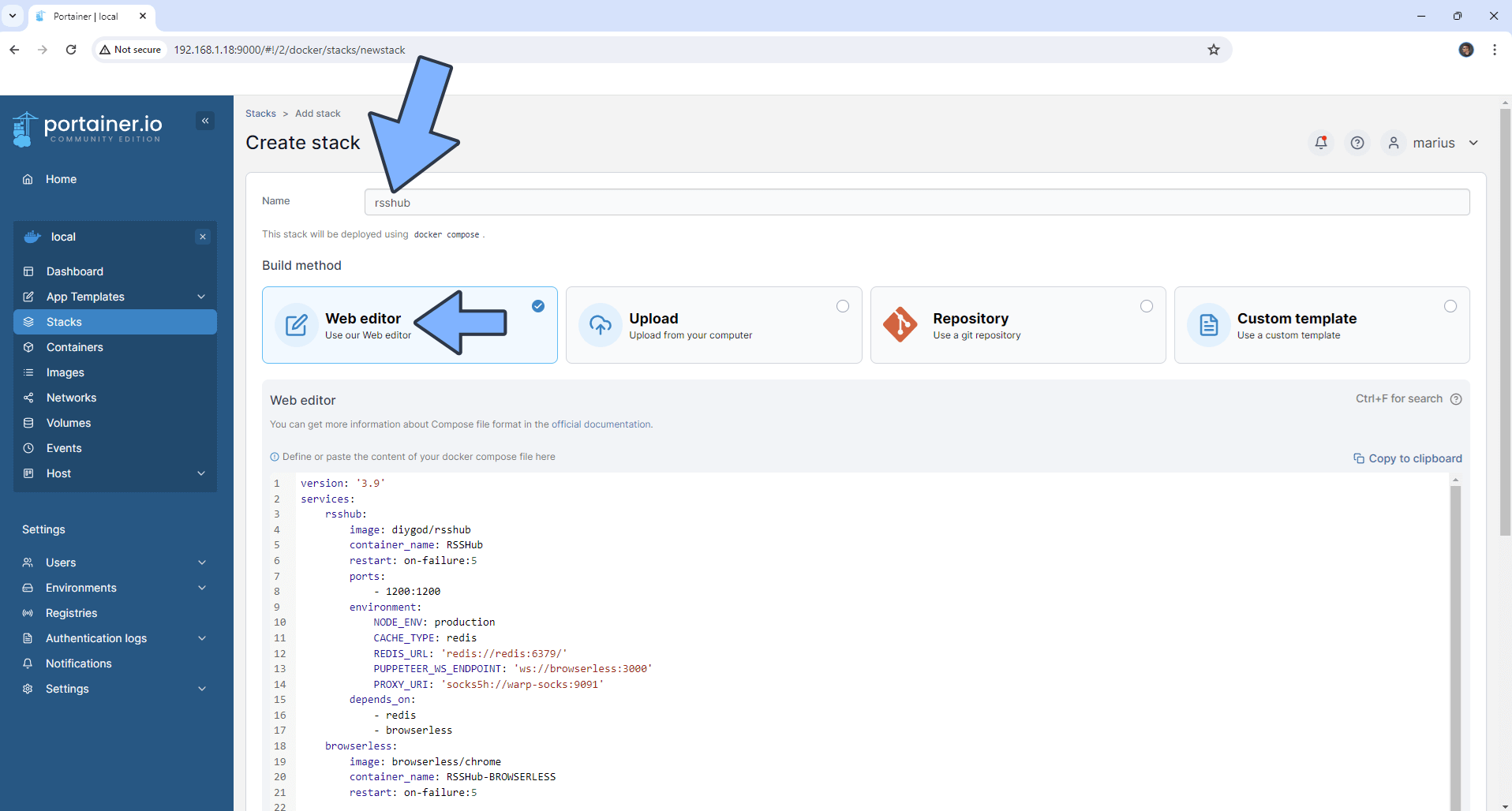
STEP 6
Scroll down on the page until you see a button called Deploy the stack. Click on it. Follow the instructions in the image below. The installation process can take up to a few minutes. It will depend on your Internet speed connection.
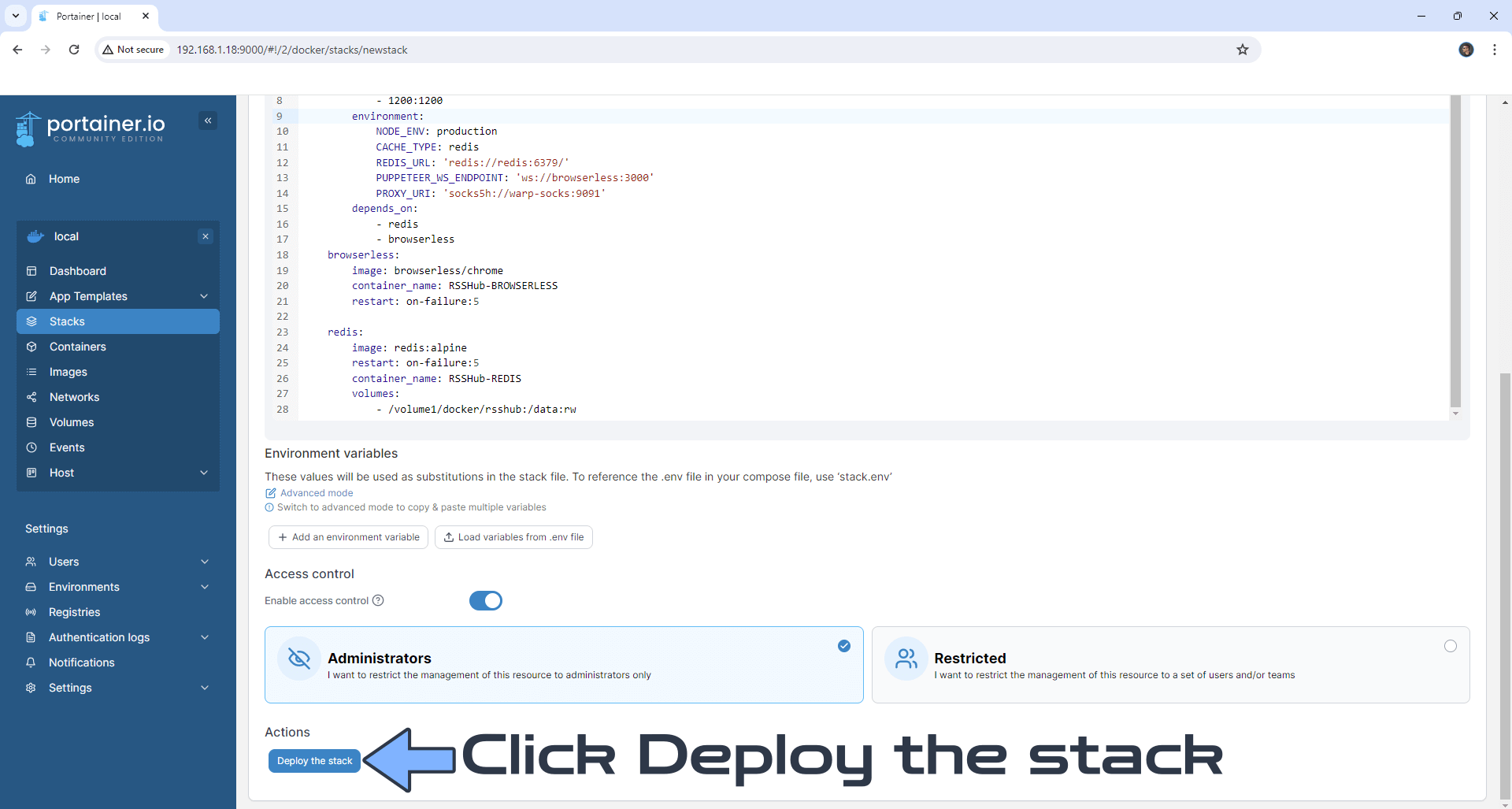
STEP 7
If everything goes right, you will see this message at the top right of your screen: “Success Stack successfully deployed“.
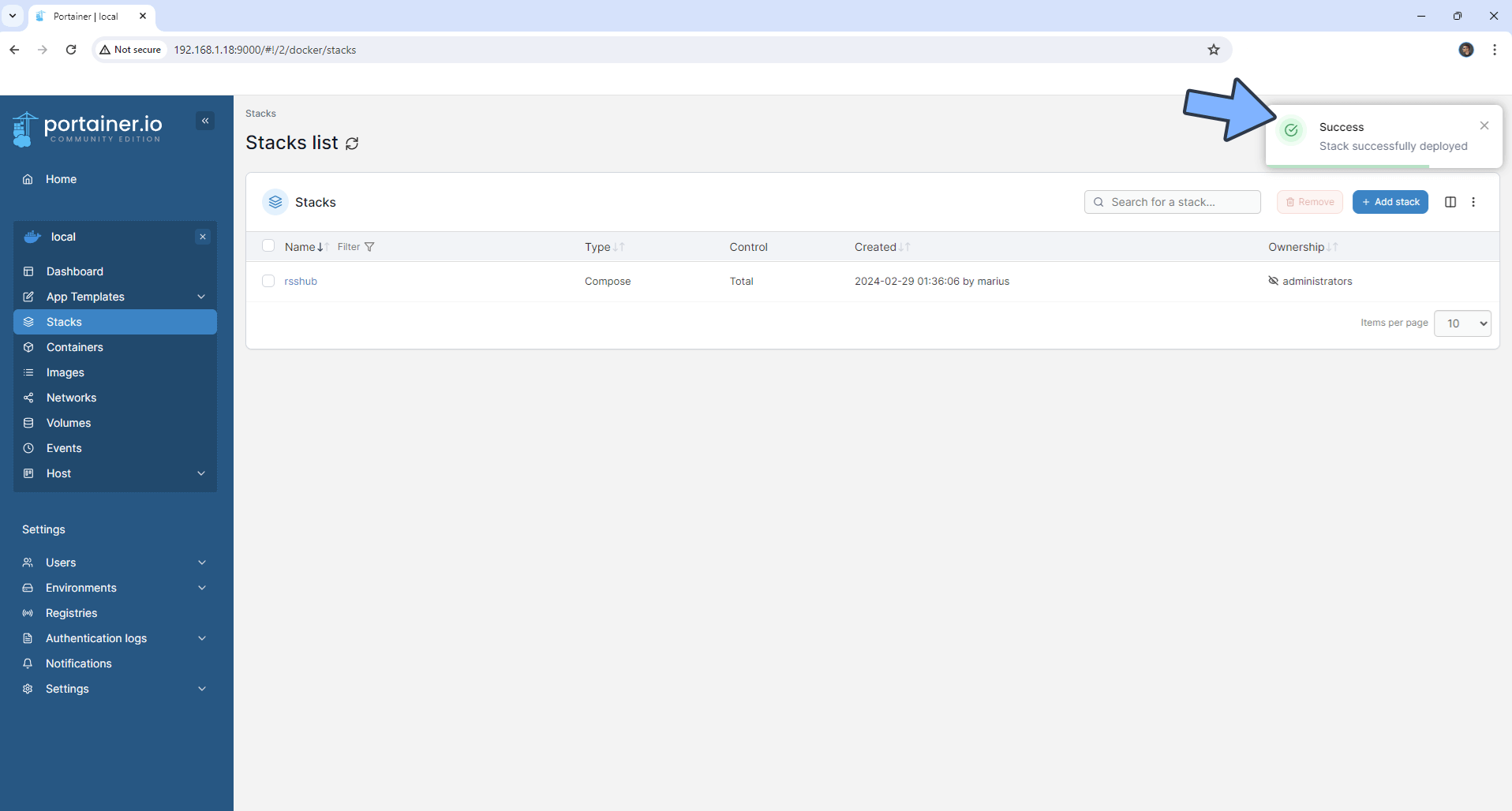
STEP 8
Go back to STEP 1 or you will deal with karma 🙂
STEP 9
The installation process can take up to a few seconds/minutes. It will depend on your Internet speed connection. Now open your browser and type in http://Synology-ip-address:1200 You will see that RSSHub is installed and working.
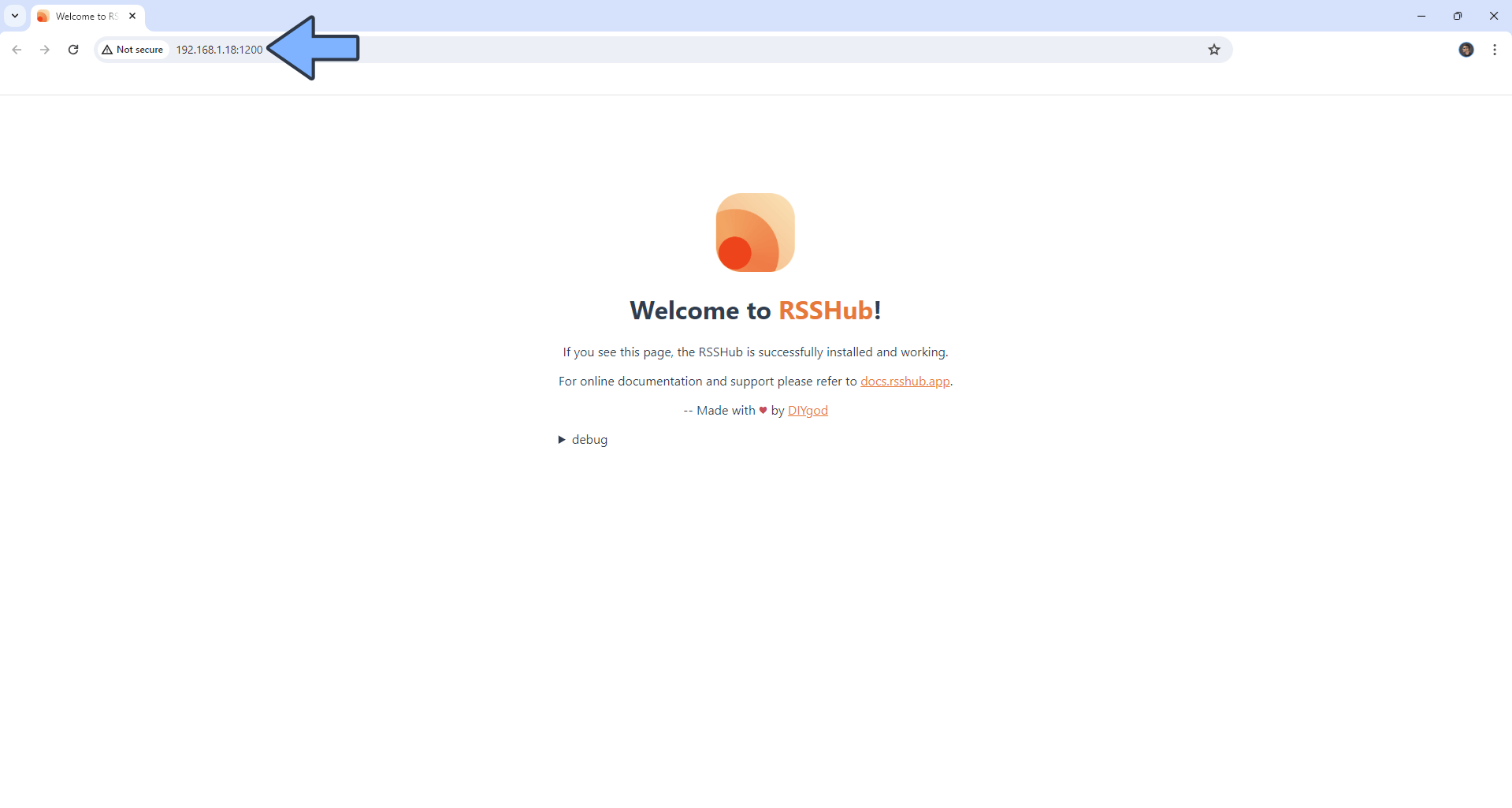
STEP 10
Download the RSSHub Radar extension for Chrome or RSSBud for iOS or RSSAid for Android. In my example, I used the RSSHub Radar extension for Chrome. Click Add to Chrome. Follow the instructions in the image below.
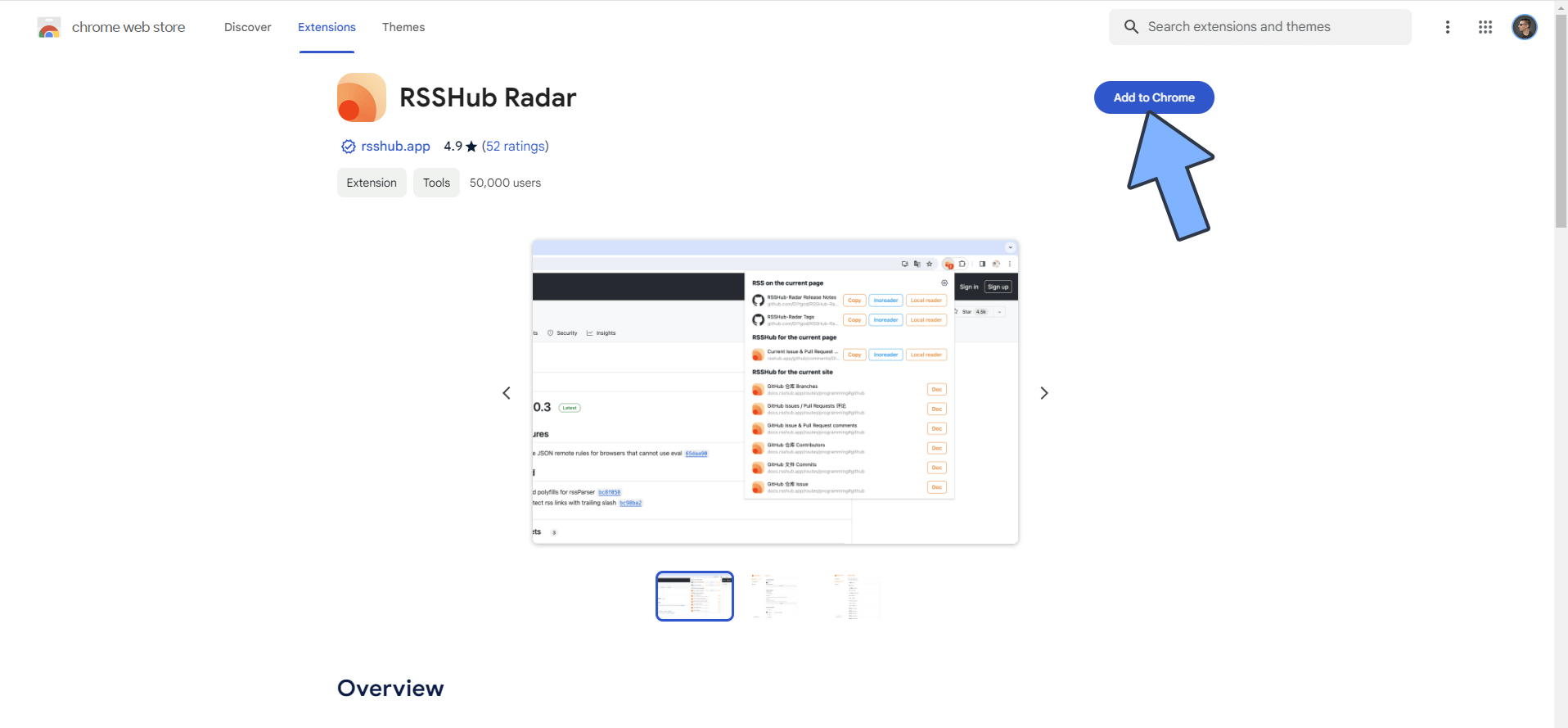
STEP 11
Click Add extension. Follow the instructions in the image below.

STEP 12
Click on your RSSHub extension in Chrome. Click on the gear icon. Follow the instructions in the image below.
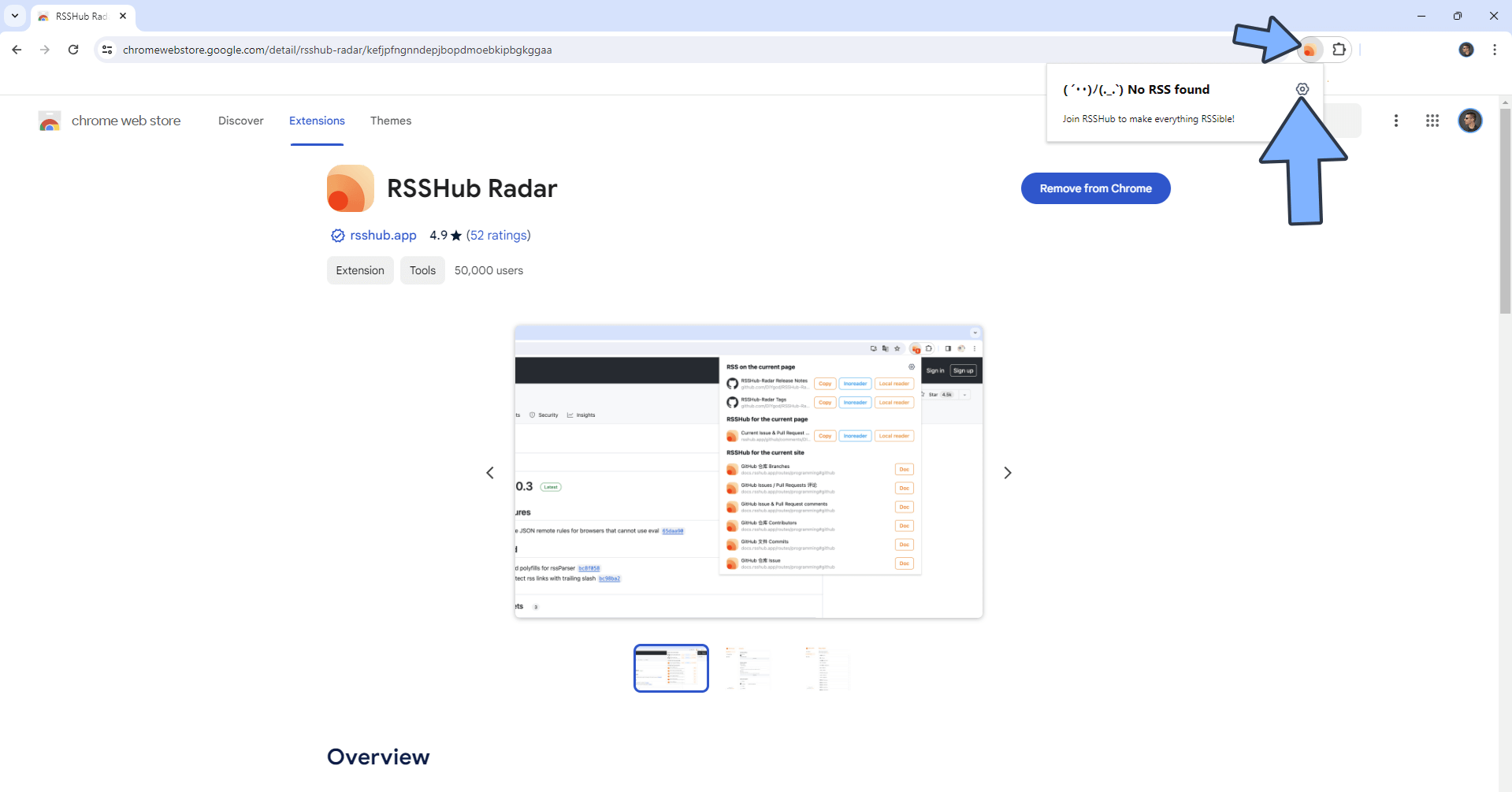
STEP 13
On the RSSHub area, type in your http://Synology-ip-address:1200 Follow the instructions in the image below.
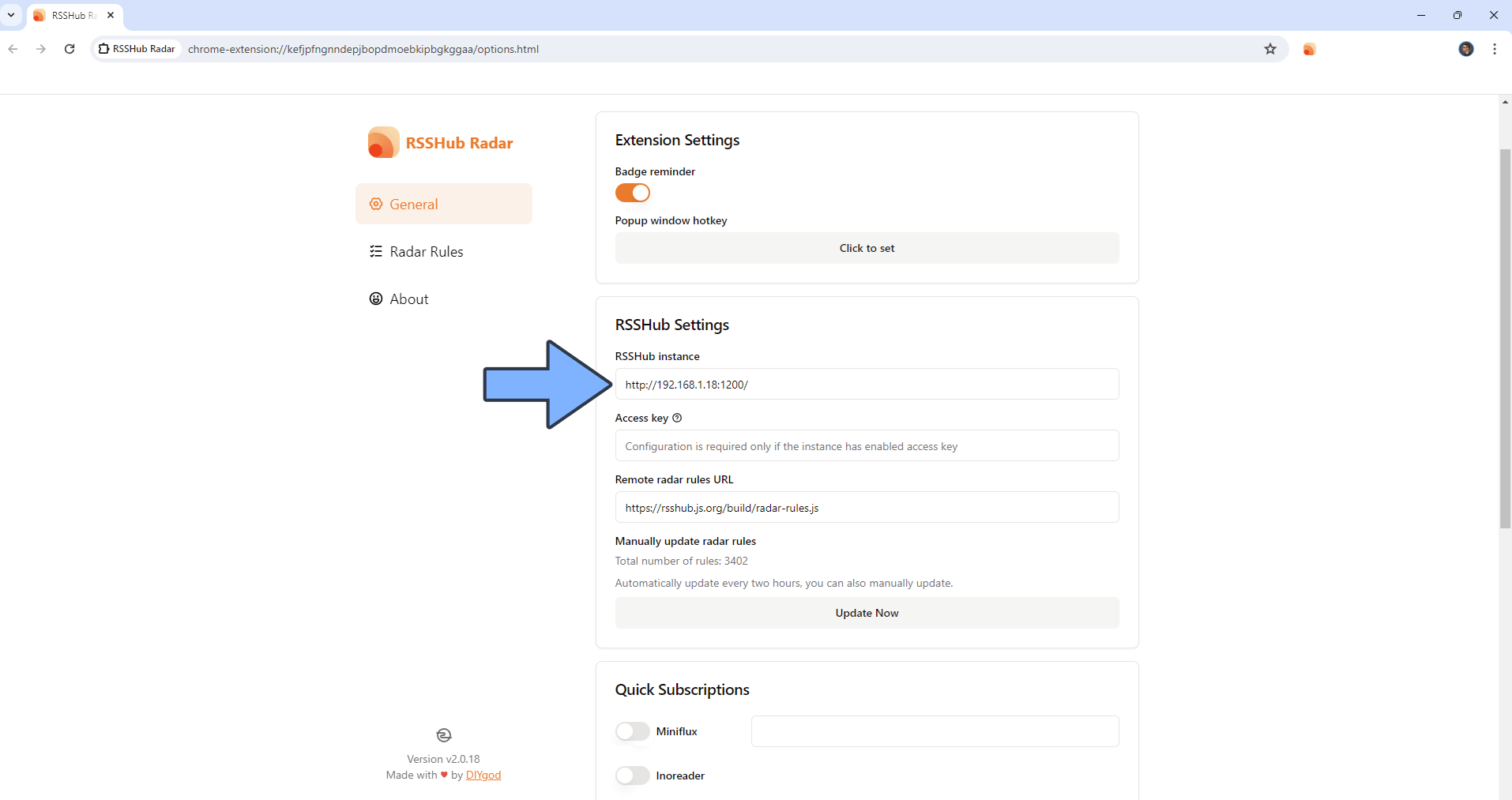
STEP 14
If you don’t have an RSS reader, just install FreshRSS or Miniflux by following my guides.
STEP 15
In the RSSHub extension area, type in your Miniflux or FreshRSS local address or, if you have them under reverse-proxy, type in miniflux.yourname.synology.me or freshrss.yourname.synology.me instead of your local addresses. Follow the instructions in the image below.
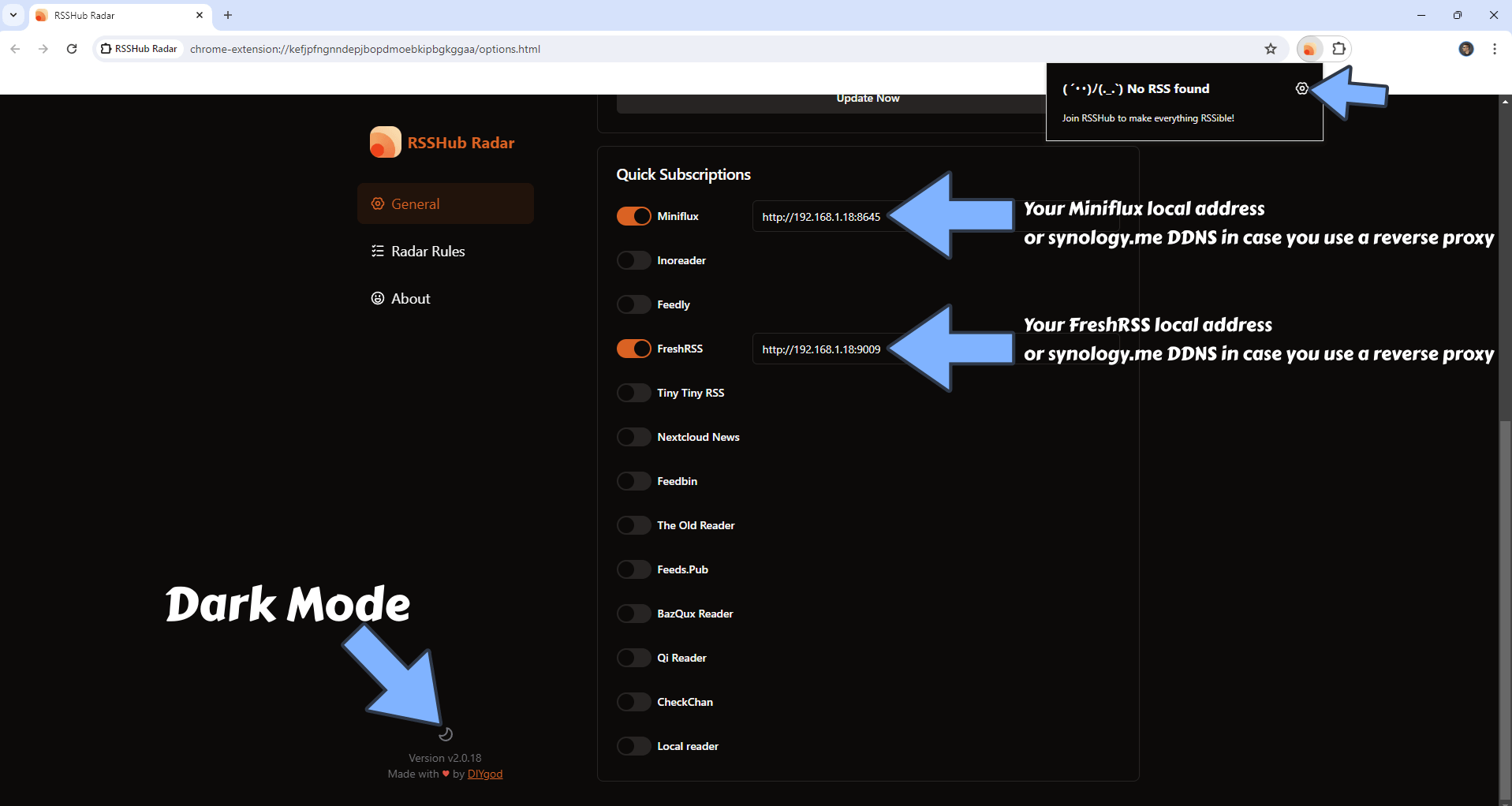
STEP 16
Visit a site that has an RSS feed such as mariushosting. The RSSHub extension in Chrome should automatically recognize it and, if you have Miniflux or FreshRSS installed, just click on your favorite feed.
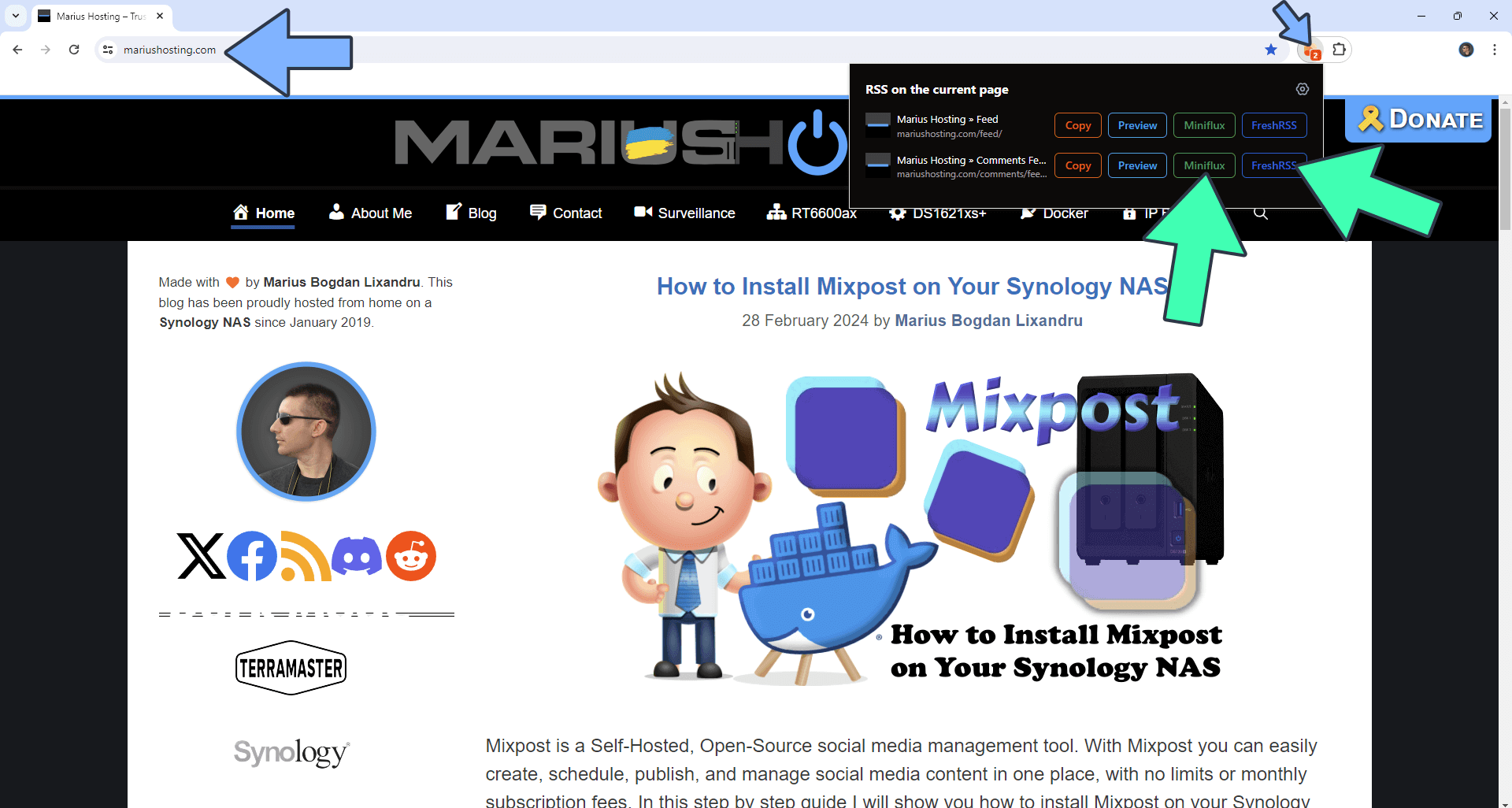
STEP 17
For example, if you click on the FreshRSS button, you will get automatically redirected to your FreshRSS instance and prompted to add your RSS link that you have visited. Follow the instructions in the images below.
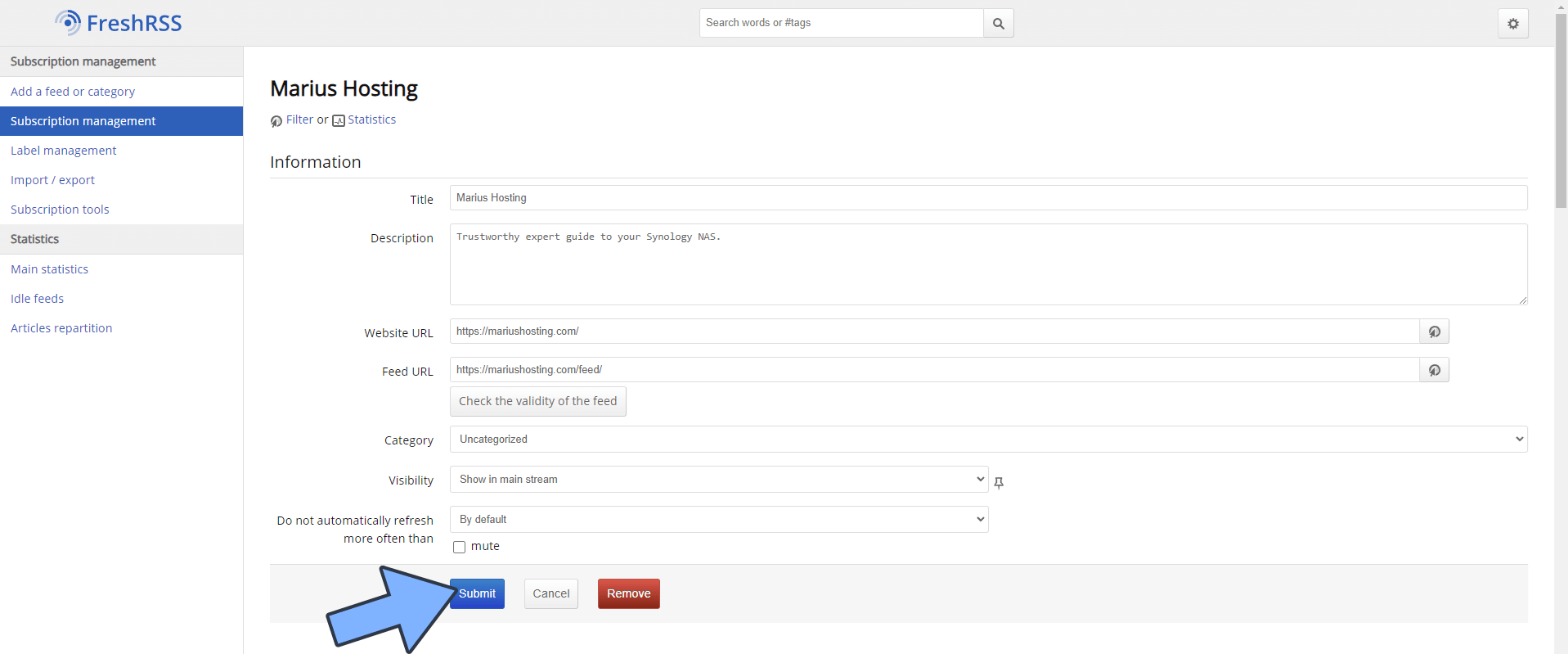
If you click on the Miniflux button, you will get automatically redirected to your Miniflux instance and prompted to add your RSS reader link that you have visited.
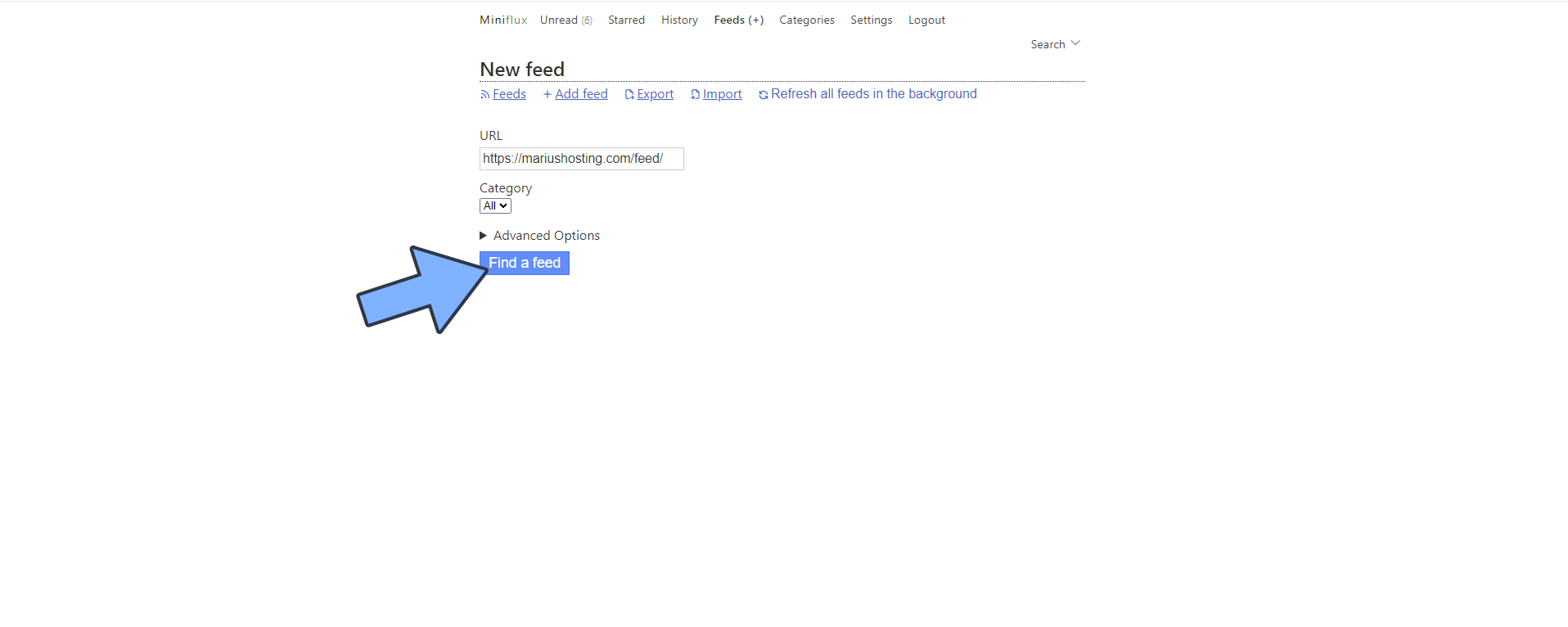
Enjoy RSSHub!
If you encounter issues by using this container, make sure to check out the Common Docker issues article.
Note: If you want to run the RSSHub container over HTTPS, check How to Run Docker Containers Over HTTPS. In order to make RSSHub work via HTTPS, it’s mandatory to activate WebSocket. Also remember to change the address at STEP 13 and instead of http://Synology-ip-address:1200 add your https://rsshub.yourname.synology.me address.
Note: Can I run Docker on my Synology NAS? See the supported models.
Note: How to Back Up Docker Containers on your Synology NAS.
Note: Find out how to update the RSSHub container with the latest image.
Note: How to Free Disk Space on Your NAS if You Run Docker.
Note: How to Schedule Start & Stop For Docker Containers.
Note: How to Activate Email Notifications.
Note: How to Add Access Control Profile on Your NAS.
Note: How to Change Docker Containers Restart Policy.
Note: How to Use Docker Containers With VPN.
Note: Convert Docker Run Into Docker Compose.
Note: How to Clean Docker.
Note: How to Clean Docker Automatically.
Note: Best Practices When Using Docker and DDNS.
Note: Some Docker Containers Need WebSocket.
Note: Find out the Best NAS Models For Docker.
Note: Activate Gmail SMTP For Docker Containers.
This post was updated on Saturday / November 23rd, 2024 at 11:05 AM
